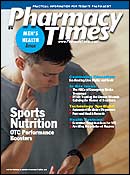Publication
Article
Pharmacy Times
Editor's Note: Personalizing Medication Errors
Author(s):
Mr. McAllister is a health-systems consultant based in Chapel Hill, North Carolina.

My colleagues in pharmacy are well-intentioned and practice diligently to avoid contributing to medication error occurrence.Many hospitals have medication safety officers and staff whose practice is dedicated to quality improvement, medication variance analysis, and implementing changes in policy and procedure to reduce error potential. When serious errors occur, a multidisciplinaryroot cause analysis and/or a failure mode effects analysis are usually performed and changes are made to ensure recurrence does not take place. Hospitals have made substantial investmentsto improve patient safety, and I believe that we all have the best intentionsfor minimizing, if not eliminating, medication errors.
We strive to create a culture of safety, encourage reporting, and commit to making changes to minimize error occurrence,but I would suggest that our priorities include compliance with The Joint Commission, avoiding legal action and negative public relations, and remainingas efficient and cost-effective as possible. Unfortunately, even the most well-intentioned providers are motivated by a variety of pressures to minimize policy and procedure changes, which consume human resources that may be overburdened already. As a result, silos are created by each discipline, and resistance to change grows. Our focus is on systems and processes and on meetingexpectations of hospital leadership. What we sometimes fail to focus on is the personal impact that these errors have on the patients for whom we care.
I recently attended a conference at which Henri Manasse, Jr, PharmD, MPH, gave a keynote lecture about preventing harm and death from the use of intravenous medications. He began his remarks by showing pictures of children who experienced medication errors that contributedto their deaths. By focusing on the people affected,I believe he made medication errors a personal issue for the audience.
Over 17 years ago, I returnedfrom vacation to discoverthat our local paper ran a front-page story with pictures of a 9-year-old who had died who came to our hospital for resolution of a benign tumor. A mix-up between vincristine and vinblastine, which went undiscovered for several days, eventuallylead to his death. My involvement in responding to this horrible tragedy and learning details about the contributingfactors and the child's family made the issue personal for me. I had a child about the same age at the time, and it was too easy to realize that it could have happened to our family had the circumstancesbeen different. Retrospective review revealed many contributing factorsthat enabled the error(s) to occur, and my staff and I, along with providers in other disciplines, were devastated. I strive to remember the traumatic sequelaethat his family and many of my colleaguesexperienced. I use that experienceto make the patient my top priority as quality improvement alternatives are examined. I believe that I become more collaborative, vigilant, and open-minded in pursuit of optimal improvements regardlessof the impact on pharmacy staff or other providers.
I am suggesting that we find ways to personalize medication errors for the entire pharmacy staff, rather than only those who are involved in a single incident.Putting a name and a face on the victims ensures that the realities of the events are not lost in our efforts to improve medication safety. After all, our failures do not result in a new car that is a "lemon" or a computer that crashes. Our failures affect the lives of vulnerable patients and their families, as well as those who may have contributed to the unfortunate events that lead to harm.
Should we use pictures of our patientswho were harmed in staff meetingsto optimally engage our staffs? Should we describe the patient's family and how they have been affected? Will making medication errors a personal issue improve our individual conviction to improve performance and vigilance? Will focusing on the patient make all disciplines more collegial, cooperative, and selfless?I wish I had the answers. What do you think?







